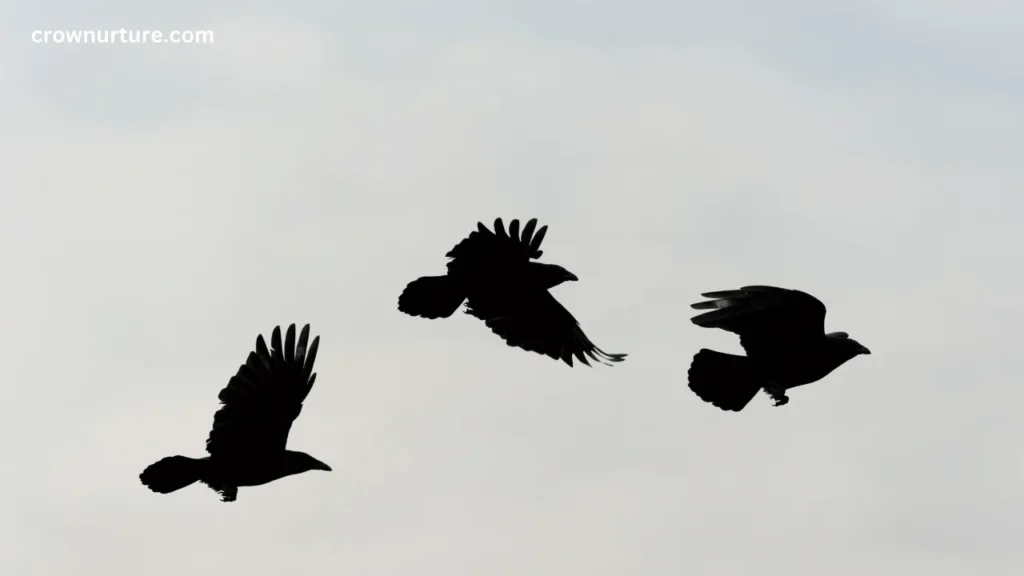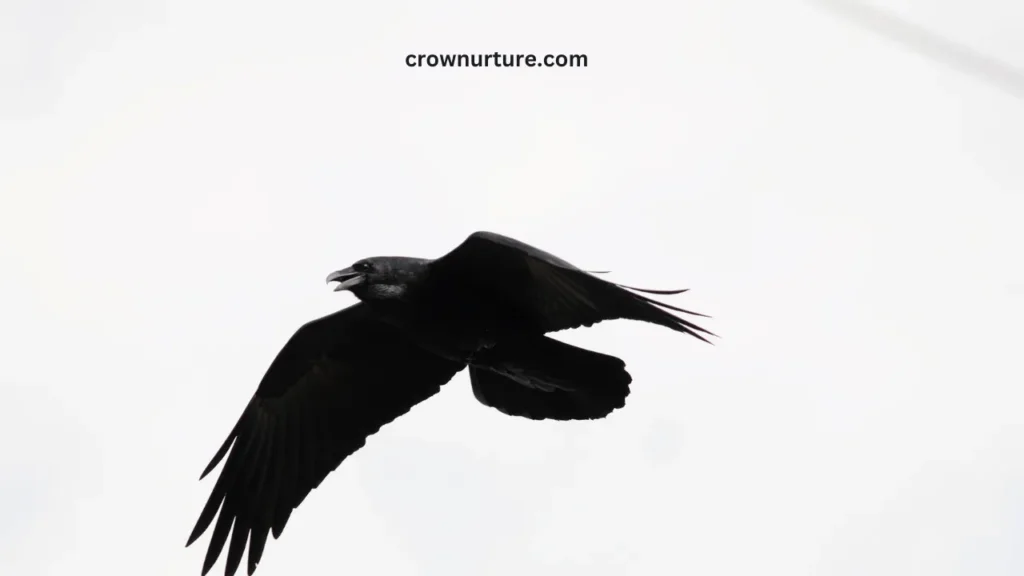Crows are some of the most common yet fascinating birds we encounter. Whether they’re gliding across the sky or swiftly darting between trees, their flight seems effortless.
But have you ever wondered just how fast these intelligent creatures can fly? Understanding their flight speed not only reveals their physical capabilities but also offers insights into how they survive, hunt, and evade predators.
The speed of a crow isn’t just about numbers—it’s a reflection of their adaptability and evolutionary finesse. Their ability to adjust flight patterns depending on the situation, from foraging to migration, makes them unique among birds.
For bird enthusiasts and casual observers alike, uncovering the secrets of their flight speed adds another layer of appreciation for these clever creatures.
From the intricate mechanics of their wingbeats to the ecological significance of their flight, this blog will take you on a journey to uncover what makes crows such remarkable flyers. Whether you’re curious about their top speeds or how they compare to other birds, keep reading to discover what fuels their aerial mastery.

Contents
1. Crow Anatomy and Flight Mechanics
- Wing Structure and Function: Crows have broad, rounded wings that allow for versatile flight patterns, including soaring, gliding, and quick maneuvers. This structure is crucial for their ability to adapt to various environments.
- Muscular Power: Strong flight muscles, especially the pectorals, power their wings, enabling sustained flapping and bursts of speed when needed.
- Aerodynamics: Crows use aerodynamic principles like reducing drag and maximizing lift to achieve efficient flight, which is why they seem to glide so effortlessly.
2. Factors Affecting Flight Speed
- Wind Conditions: Tailwinds can significantly boost a crow’s speed, while headwinds slow them down. Crows are adept at using wind currents to conserve energy.
- Body Weight: The weight of a crow, influenced by age, diet, and health, can impact its ability to accelerate and maintain high speeds.
- Flight Mode: Crows use different flight modes, such as powered flapping for speed and gliding for efficiency, depending on the situation.

3. Measuring Flight Speed
- Challenges in Measurement: Accurately measuring a crow’s flight speed is difficult due to their unpredictable movements and varied flight modes.
- Radar Tracking: Scientists use radar systems to track and measure the flight speed of birds in the wild, providing precise data.
- Direct Observation: Birdwatchers use binoculars and high-speed cameras to estimate crow flight speeds, though this method is less exact.
4. Specific Studies on Crow Flight Speed
- Research Findings: Studies suggest that crows can fly at speeds of up to 30-40 miles per hour during regular flight and reach up to 55 miles per hour in short bursts when evading predators or chasing prey.
- Comparison with Other Birds: While not the fastest flyers, crows’ speed is impressive compared to other birds their size, such as pigeons or starlings.
- Impact of Environmental Factors: Temperature, air pressure, and humidity can subtly affect a crow’s flight speed by altering air density and resistance.
5. The Ecological Significance of Flight Speed
- Foraging Behavior: Crows rely on their flight speed to cover large areas quickly when searching for food, making them highly efficient foragers.
- Predator Avoidance: Their speed and agility allow them to evade predators, often using clever maneuvers mid-air to escape threats.
- Migration: While not all crows migrate, those that do, such as some American Crow populations, rely on sustained flight speeds to complete their seasonal journeys.
Conclusion
Crows are exceptional flyers, with their speed playing a vital role in their survival and adaptability. Capable of reaching speeds of up to 55 miles per hour in bursts, they combine strength, intelligence, and aerodynamic efficiency to navigate their environment.
Their versatile flight patterns—whether gliding to conserve energy or accelerating to escape predators—showcase their remarkable evolution. Understanding how fast crows can fly goes beyond satisfying curiosity.
It offers a glimpse into their lives, their challenges, and their strategies for thriving in diverse habitats. By appreciating their aerial abilities, we deepen our respect for these extraordinary birds and the ecosystems they inhabit.
FAQs
1. How fast can a crow fly on average?
Crows typically fly at speeds of 20-40 miles per hour, depending on wind conditions and flight mode.
2. What is the maximum speed of a crow?
Crows can reach up to 55 miles per hour in short bursts, such as when fleeing predators or chasing prey.
3. Do crows fly faster than other birds?
While crows aren’t the fastest birds, their flight speed is impressive for their size and rivals many similar species.
4. How do wind conditions affect crow flight?
Tailwinds help crows fly faster, while headwinds slow them down. They often use wind currents to conserve energy.
5. Can crows glide without flapping their wings?
Yes, crows are skilled gliders, using thermal updrafts to soar and conserve energy during flight.
6. Do all crows migrate?
Not all crows migrate. Some species, like the American Crow, migrate seasonally, while others remain in the same area year-round.








